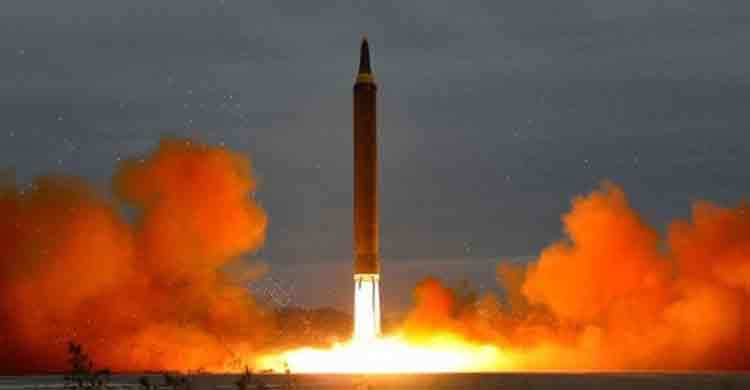North Korea fires ballistic missile over Japan

North Korea fired a ballistic missile early on Friday from the capital Pyongyang that flew over northern Japan, the latest provocation amid high tensions over its banned weapons programmes.
The projectile was launched at 6:57am (21:57GMT Thursday) and flew over the northern Japanese island of Hokkaido before falling into the Pacific Ocean - 2,000km east of Cape Erimo, said Japan's Chief Cabinet Secretary Yoshihide Suga. It splashed down at 7:16am (22:16GMT).
“Japan protests the latest launch in the strongest terms and will take appropriate and timely action at the United Nations and elsewhere, staying in close contact with the United States and South Korea,” Suga told reporters.
The country can “never tolerate this repeated extreme provocative action”, he added.
South Korea's defence ministry said the missile travelled about 3,700km and reached a maximum altitude of 770km - both higher and further than previous tests.
The ministry said the South's military conducted a live-fire ballistic missile drill in response to the North's launch.
The US military said it detected a single intermediate range ballistic missile.
It didn't pose a threat to North America or the US Pacific territory of Guam, Commander Dave Benham, a spokesman for US Pacific Command, said in a statement, citing an initial assessment.
The South Korean and US militaries are analysing details of the launch, the South's Office of the Joint Chiefs of Staff said. South Korea's presidential Blue House called an urgent National Security Council meeting.
The North's launch came a day after Pyongyang threatened to sink Japan and reduce the United States to “ashes and darkness” for supporting a UN Security Council resolution imposing new sanctions against it for its September 3 nuclear test.
Lawrence Korb, a former US assistant secretary of defence, told Al Jazeera the missile launch came as no surprise as the North was seeking to show its anger over the latest UN sanctions.
“Basically we knew they were up to something because they were moving things to where they usually launch missiles. It's very clear that this was in defiance,” he said.
The United Nations Security Council voted unanimously on a US-drafted resolution and a new round of sanctions on Monday, banning North Korea's textile exports and capping fuel supplies.
US President Donald Trump has vowed that North Korea will never be allowed to threaten the United States with a nuclear-tipped missile.
The United States and South Korea are technically still at war with North Korea because the 1950-53 Korean conflict ended with a truce and not a peace treaty.
Korb suggested direct talks with the North and an offer to formally end the Korean war could work to deter its provocations.
“Eventually that's how you're going to settle this, you're going to have to recognise North Korea as a nuclear power - you want to stop it where you are, and guarantee their sovereignty. They think they need these weapons to protect themselves from an invasion by the South or the United States, which is not true, but in their mind it is,” said Korb.
Robert Kelly, associate professor of political science at Pusan National University in South Korea, said it remained to be seen if Pyongyang could be deterred from pursuing its goals.
“The North Koreans have shown a hell-bent attitude towards nuclearisation come hell or high water. That's the problem - the North really wants these things and there's not much we can give them that would encourage them to actually de-nuclearize,” Kelly told Al Jazeera.
The North previously launched a ballistic missile from Sunan near the capital on August 29, which flew over Japan's Hokkaido island and landed in the Pacific waters.
The North has raised tensions in the region with its rapid progress in weapons technology under leader Kim Jong-un, who is closely associated with the programme and regularly pictured by state media overseeing launches and visiting facilities.
Source: Al Jazeera



